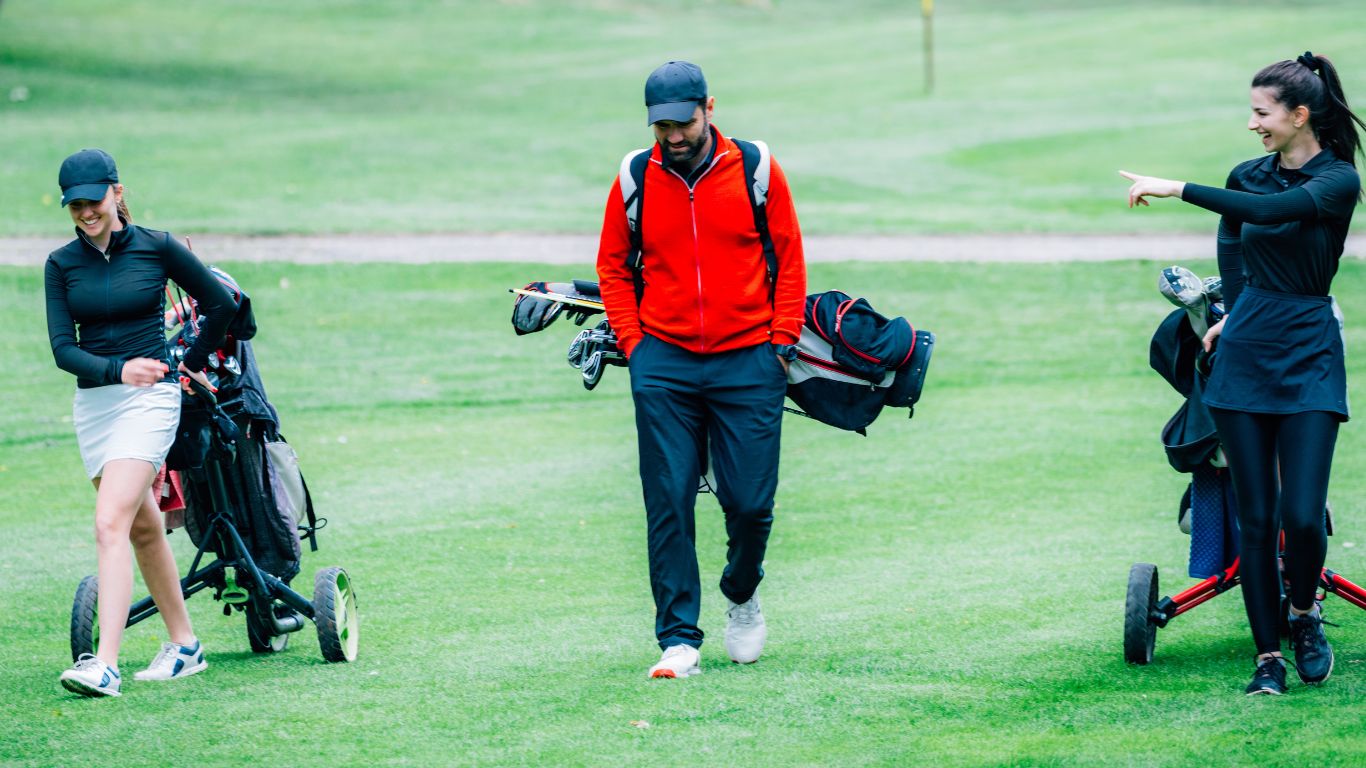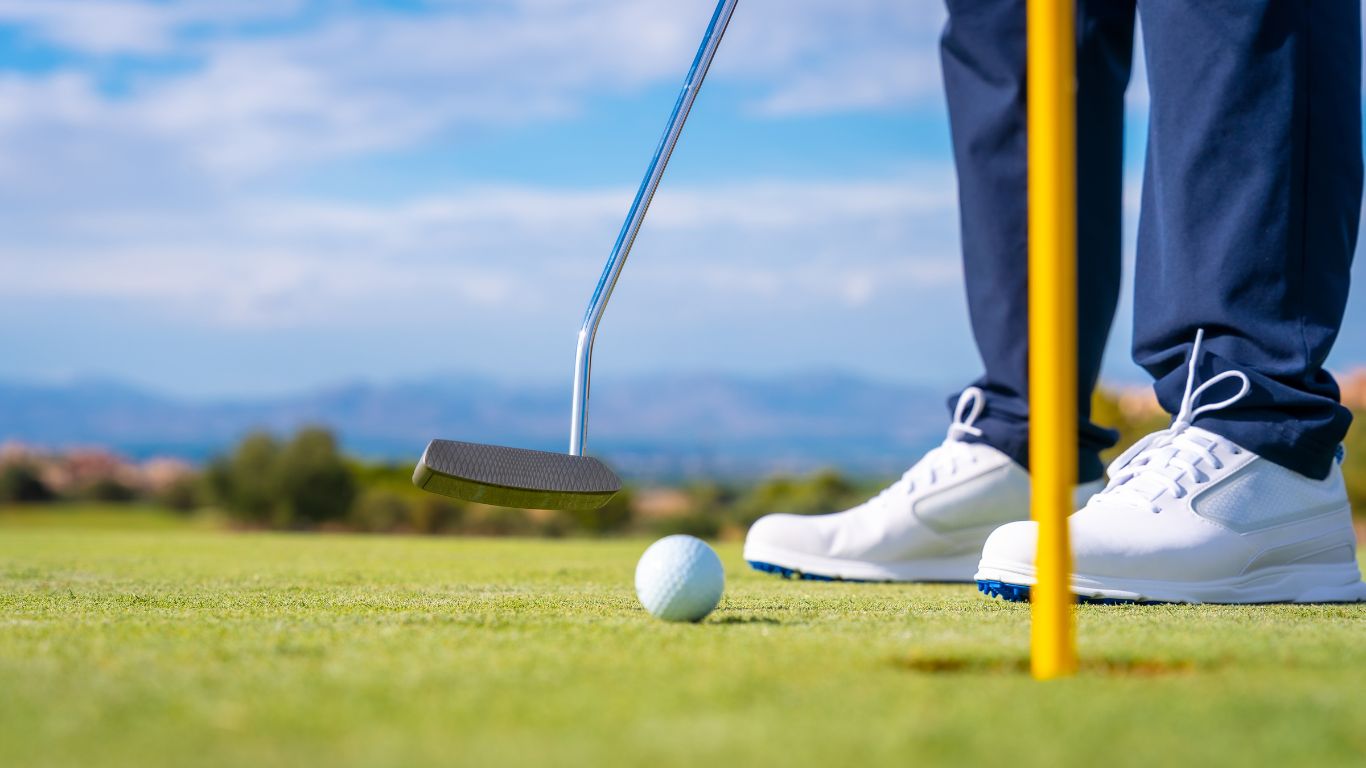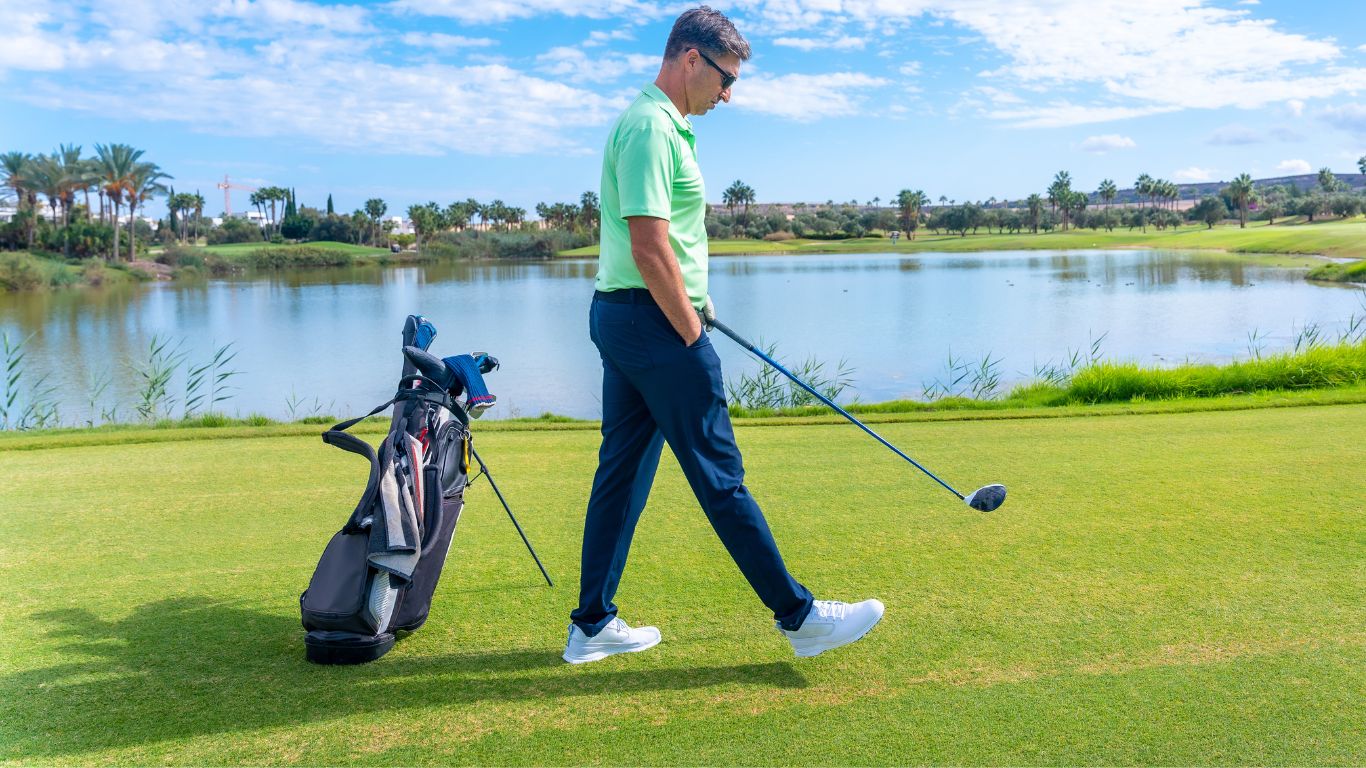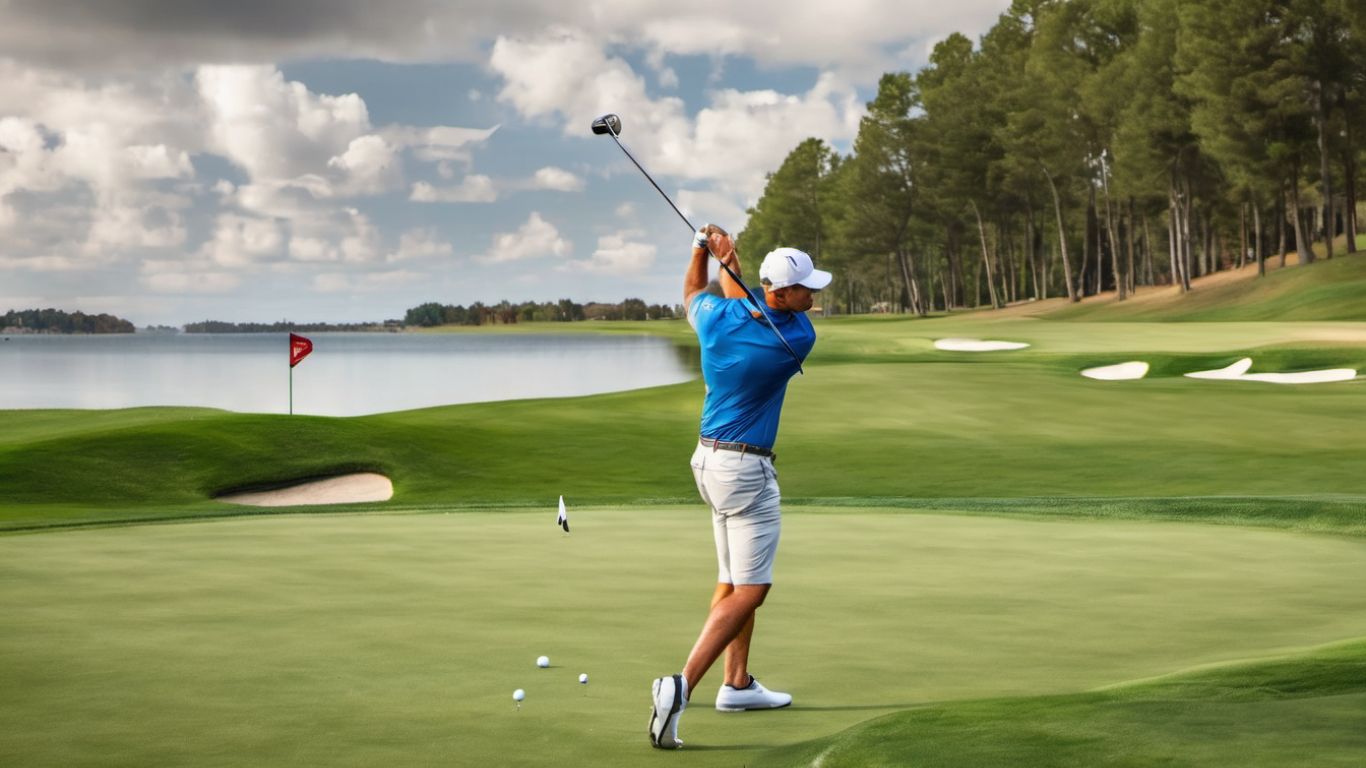You can have a maximum of 14 golf clubs in your bag. In the world of golf, having the right set of clubs is essential for success on the course.
But how many clubs are you allowed to have in your bag? The answer is a maximum of 14. Golfers are allowed to carry 14 clubs, which typically include a driver, fairway woods, irons, wedges, and a putter. Each club has its own unique purpose and is designed for specific shots and distances.
With a well-rounded set of clubs, golfers can adapt to different situations and improve their chances of achieving a low score. We’ll explore the different types of clubs and their roles in a golfer’s bag, helping you understand why having the right numbers and variety is crucial for a successful game.
Choosing The Right Golf Clubs
Golf is a sport that requires precision and skill, and having the right golf clubs in your bag can make all the difference in your game. Whether you’re a beginner or an experienced golfer, it’s important to understand the role of different golf clubs and determine the ideal number to carry in your bag. By choosing the right golf clubs, you can maximize your performance and improve your game on the course.
Understanding The Role Of Different Golf Clubs
Golf clubs come in various shapes, sizes, and designs, each serving a specific purpose on the golf course. Understanding the role of different golf clubs is essential in selecting the right ones for your bag. Here are the primary types of golf clubs and their functions:
- Drivers: Also known as the 1-wood, drivers are designed to hit the ball for long distances off the tee. They have a large head and a low loft angle, allowing for maximum distance coverage.
- Woods: Woods are used for hitting long shots from the fairway or rough. They have larger heads and shorter shafts than drivers, providing extra forgiveness and distance.
- Hybrids: Hybrids combine the best features of irons and woods. They are versatile clubs that can be used for a variety of shots, including fairway shots, long approaches, and even chipping around the green.
- Irons: Irons are the most common type of golf club and are used for a variety of shots. They come in numbered sets, ranging from 3-iron to 9-iron, and are intended for shots of varying distances and trajectories.
- Wedges: Wedges are used for shots that require a high trajectory and a short distance, such as bunker shots, chip shots, and pitch shots. They have a higher loft angle compared to irons, allowing for better control and accuracy.
- Putters: Putters are essential for the final strokes on the green. They have a flat face and are specifically designed for rolling the ball accurately into the hole.
Determining The Ideal Number Of Golf Clubs
When determining the ideal number of golf clubs to carry in your bag, several factors come into play:
- Player Skill Level: Beginners may benefit from carrying a full set of 14 clubs to cover all possible shots, while more experienced players often have a better feel for their preferred clubs and may carry fewer.
- Course Layout: The layout and characteristics of the golf course can influence club selection. Consider the distance and types of shots required on the course to determine the clubs that will be most useful.
- Personal Preference: Every golfer has their own unique playing style and comfort level with certain clubs. Experimenting with different clubs and determining which ones give you the most confidence and consistency is key.
It’s important to strike a balance between having enough clubs to handle various situations and not overcrowding your bag. Remember, the more clubs you carry, the heavier your bag will be, potentially affecting your swing and overall performance.

Credit: www.amazon.com
The Importance Of Club Selection
When it comes to golf, one crucial aspect that can significantly impact your performance is club selection. Making the right choice can make a world of difference in how you navigate the course and achieve your desired results. The key is to select the right club for each shot, considering factors such as the course layout, weather conditions, and your own skill level. By analyzing these factors, you can make informed decisions and maximize your chances of success on the golf course.
Analyzing The Course Layout
The course layout plays a vital role in determining which clubs you should have in your bag. As you assess the holes, you can identify potential hazards, distances, and the type of shots required. By understanding the course’s features, you can effectively plan your shots and select the appropriate clubs. For instance, if you encounter a long hole with a wide fairway, a driver club may be the right choice to achieve maximum distance. On the other hand, shorter holes with narrow fairways may necessitate a precise iron shot. Analyzing the course layout helps you make strategic decisions and adapt your club selection accordingly.
Considering Weather Conditions
Weather conditions have a significant impact on your golf game and can influence the club selection process. Wind, temperature, and humidity can affect the flight of the ball and how it behaves upon landing. For instance, playing in strong headwinds may require you to choose a lower lofted club to keep the ball low and reduce the impact of the wind. Conversely, tailwinds may allow you to use a higher lofted club to generate additional carry distance. By analyzing the weather conditions, you can choose the appropriate club to adapt to the current situation and optimize your shots.
Assessing Your Skill Level
Another vital factor to consider when selecting clubs is your own skill level. Each player has different strengths and weaknesses, making it essential to choose clubs that complement their abilities. Novice players may find it easier to use hybrid clubs instead of long irons for optimal distance and forgiveness. In contrast, experienced golfers may prefer specific irons or wedges to control shot trajectory and spin. By assessing your skill level, you can identify the clubs that suit your game best and improve your chances of success on the course.
Essential Golf Clubs Every Player Should Have
In order to play the game of golf effectively, it is vital to have a set of essential golf clubs in your bag. These clubs cater to different situations on the course, enabling you to manage various shots with precision and accuracy. Whether you are a beginner or a seasoned golfer, these essential golf clubs are a must-have to improve your game and overall performance.
Driver
The driver is designed to hit the ball the farthest off the tee. It is a key club for long-distance shots and is typically used on par 4 and par 5 holes, providing maximum distance and power off the tee.
Fairway Woods
Fairway woods are versatile clubs designed for longer shots from the fairway or rough. They help players cover longer distances and can be particularly useful on par 5 holes or when the player needs extra yardage while still maintaining control.
Irons
Irons are used for shorter shots and are essential for approach shots to the green. They come in various numbered irons, each designed for different distances and trajectories. They are crucial for accuracy and control, especially when aiming for the green from a fairway or rough.
Wedges
Wedges help players make precise shots around the green. They are essential for various short-game situations, such as pitching, chipping, and getting out of bunkers. Wedges provide the necessary loft and spin to stop the ball close to the pin, maximizing scoring opportunities.
Putter
The putter is the most crucial club for finishing a hole. It is used on the putting green to roll the ball into the hole. Accuracy and control with the putter are essential for lower scores, making it a vital club for every golfer.
Customizing Your Golf Club Selection
When it comes to customizing your golf club selection, it’s essential to tailor your bag to your unique playing style. Whether you’re adding or removing clubs, or building a versatile golf bag, personalizing your club selection can greatly enhance your game.
Adding Or Removing Clubs
When customizing your golf bag, it’s important to consider your individual strengths and weaknesses on the course. Ensure you have clubs that complement your game and remove those that are seldom used or redundant. This can streamline your bag, leaving you with a selection that is tailored specifically to your needs.
Building A Versatile Golf Bag
To build a versatile golf bag, it’s crucial to include a mix of clubs that cover various distances and shot types. Consider including a driver, fairway woods, hybrids, irons, wedges, and a putter. This ensures you have the right club for any situation, providing versatility and adaptability on the course.
Strategies For Optimizing Golf Club Usage
Golf is a game of precision, strategy, and skill. One key aspect of your game is understanding how to optimize your golf club usage. By carefully choosing the right clubs for each shot and situation, you can improve your performance on the course. In this article, we will explore various strategies that can help you make the most out of your golf clubs, including understanding club distances, mastering shot types, and identifying specialty clubs.
Understanding Club Distances
Understanding the distances each club in your bag can achieve is crucial for making informed decisions on the course. Different clubs have varying levels of loft, which affects the trajectory and distance of your shots. Here’s a handy table that provides a general overview of typical club distances for an average golfer:
| Club | Estimated Distance (yards) |
|---|---|
| Driver | 200-250 |
| 3-wood | 180-220 |
| 5-wood | 170-200 |
| 3-iron | 160-190 |
| 4-iron | 150-180 |
| 5-iron | 140-170 |
It’s important to note that these distances can vary depending on factors such as your swing speed, skill level, and course conditions. By familiarizing yourself with your clubs’ distances, you can select the best one for each shot, avoiding situations where you hit the ball too short or overshoot the target.
Mastering Shot Types
Another strategy for optimizing golf club usage is mastering different shot types. Each shot requires a specific approach and club selection based on the desired outcome. Here are some common shot types to consider:
- Full Swing: A full swing shot is typically used for maximum distance and power. It requires a longer club, such as a driver or a fairway wood.
- Chip Shot: A chip shot is a low-trajectory shot used when close to the green. This shot demands precision and control and is often executed with a more lofted iron, like a pitching wedge or a sand wedge.
- Pitch Shot: A pitch shot is used to carry the ball a shorter distance but with more loft, allowing it to land softly on the green. A sand wedge or a lob wedge is commonly used for pitch shots.
- Bunker Shot: When you find yourself in a sand trap or bunker, a specialized club like a sand wedge is essential for executing a bunker shot effectively.
By honing your skills in these different shot types and understanding which club to use, you will have more control over your shots and be better equipped to tackle various challenges throughout the course.
Identifying Specialty Clubs
In addition to your standard set of clubs, identifying specialty clubs that suit your playing style and the course you’re on can further optimize your golf club usage. These clubs are designed for specific situations or shots that may arise during your game. Some common examples include:
- Hybrids: Hybrids combine the qualities of irons and fairway woods, providing forgiveness and versatility, particularly for shots from the rough or longer shots requiring greater precision.
- Utility Wedges: Utility wedges, also known as gap wedges, are designed to fill the gap between your pitching wedge and sand wedge. They come in various lofts and can be useful for shots that require a specific yardage.
- Rescue Clubs: Rescue clubs, often referred to as “rescue” or “utility” clubs, can be advantageous in situations where you need to hit the ball out of a difficult lie, such as thick rough or from under trees.
By incorporating specialty clubs into your bag, you have a greater range of options for specific shots or course conditions, allowing you to optimize your club selection and improve your overall game.

Credit: deercreekflorida.com
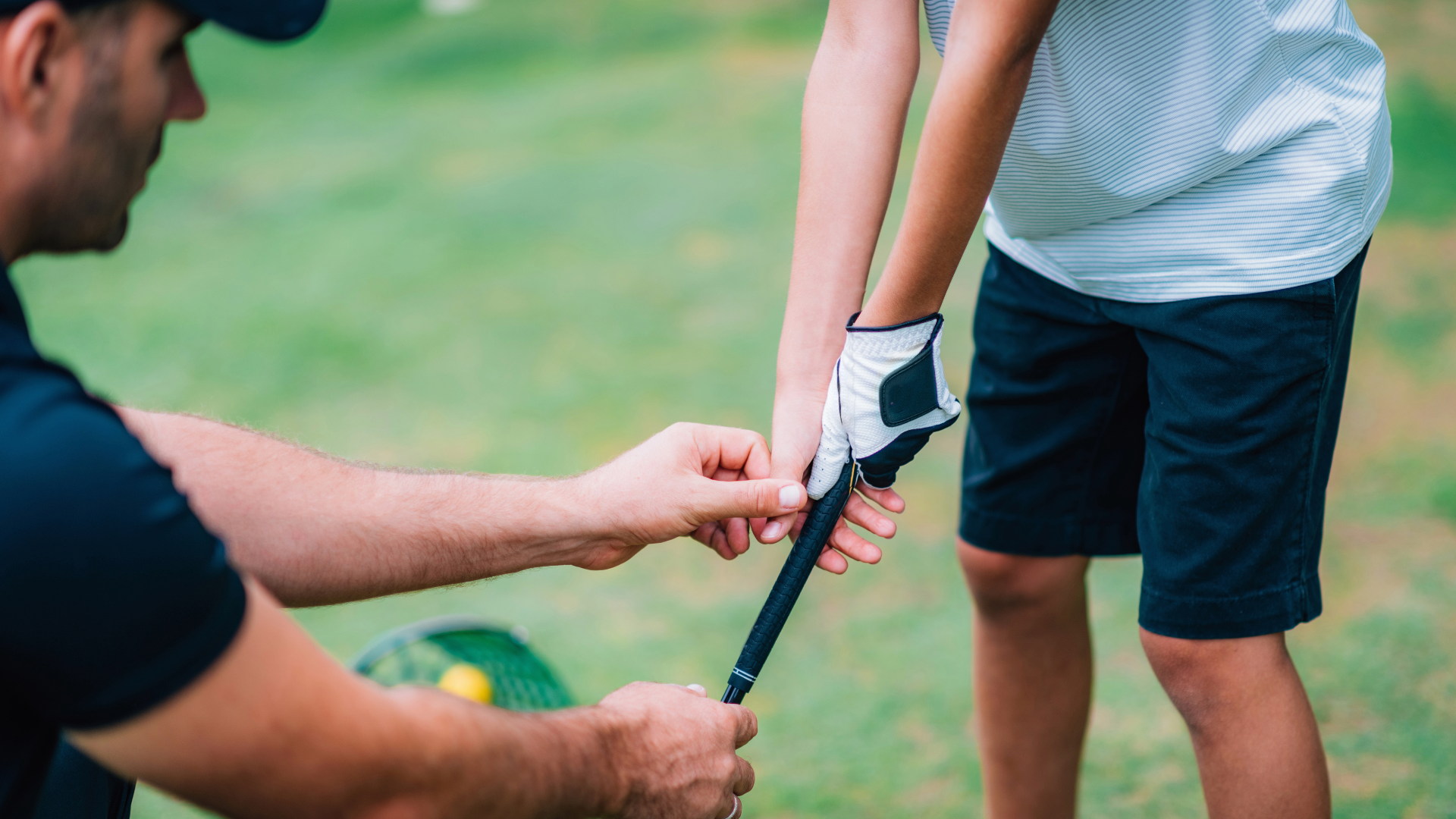
Credit: www.performancegolf.com
Frequently Asked Questions Of How Many Golf Clubs Can You Have In Your Bag
Can I Have 15 Clubs In My Bag?
Yes, you can have 15 clubs in your golf bag. The maximum number allowed by golf regulations is 14, but some players may carry an extra putter for practice purposes. Ensure you abide by golf rules and regulations during competitions.
Is There A Limit To How Many Golf Clubs You Can Carry?
There is no specific limit to how many golf clubs you can carry. However, most golfers typically carry a maximum of 14 clubs in their bag, according to the rules set by the United States Golf Association (USGA).
Can You Carry 18 Clubs In 2023?
Yes, in 2023, you are allowed to carry a maximum of 14 clubs in a golf bag according to the USGA and R&A rules.
How Many Clubs Can A Pro Golfer Have In His Bag?
A pro golfer can have a maximum of 14 clubs in their bag during a tournament. This includes various types of clubs, such as drivers, irons, wedges, and putters. Professional golfers carefully choose their clubs based on the course and their playing style.
Conclusion
To sum up, the number of golf clubs you can have in your bag depends on various factors such as the rules of the golf course and your personal preference. It is important to consider the versatility and functionality of your clubs to enhance your game.
Ultimately, whether you choose to carry a few or the maximum allowed, make sure your selection helps you navigate the fairways with confidence and enjoyment.





